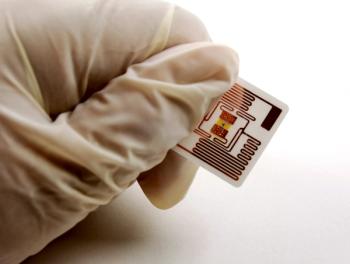
Pharmaceutical Technology Europe
- Pharmaceutical Technology Europe-10-01-2004
- Volume 16
- Issue 10
Automated artwork generation
This article examines automated artwork generation, which enables pharma companies to generate validated artwork for their products' packaging. Automated artwork generation is based on a complete set of data stored in an artwork management system. It enables the dynamic assembly of artwork documents, accelerates traditional processes and significantly reduces costs.
There have been numerous automation and computing developments in many areas of pharmaceutical packaging. For many years, document management systems (DMSs), workflow systems and complex artwork tools have been used. The new generation of computer-supported artwork management, however, is a combination of these single applications. Data, which have so far been stored on different systems within the company, have to be brought together and combined in a single, centralized system. Only such a system will fulfil the requirements for electronic, validated processes for artwork documents, thereby ensuring paperless, automated documentation of the artwork process (21 CFR Part 11). Similar to the workings of an enterprise resource planning system, this all- encompassing approach will bring many advantages vis à vis companies not yet working with this level of automation within the artwork process.
Artwork management
Introducing new computerized systems for use in pharmaceutical processes is expensive, because of the fact that such systems must be validated. Companies must compare the advantages of the system with the associated costs. Artwork creation is an area that has, traditionally, operated with computerized systems. However, the programs used merely represent tools that are not included in any electronically based working processes. An integrated artwork management system (AMS) offers a great number of possibilities for process control and automated artwork generation in the field of pharmaceutical packaging artwork.
Lead times
There are many benefits that automated artwork generation can bring to the pharmaceutical industry. For example, legal requirements often force pharma manufacturers to make changes at short notice. Additionally, marketing departments require rapid changes to react to fluctuations in market conditions. And, in the field of generics, lead times in the introduction of new products is of paramount importance; although pharmaceutical companies have little influence on the time taken for product registration, they do need to have their artwork completed as early as possible. Even a few weeks can be decisive.
Lead times in the preparation of artwork is dependent on available resources. Employees are frequently overloaded as the number of changes is constantly growing. Service providers may be able to alleviate the situation, but are themselves frequently overloaded too. Communication and documentation place a further burden and this results in lead times becoming even longer. To remain efficient in this time-critical process, packaging artwork has, as a rule, strict design regulations. By means of this harmonization, employees are able to concentrate on the key aspects that are of importance for medicine packaging artwork. Consequently, the packaging of a particular manufacturer is very similar and only differs in the text element. The text itself is also subject to frequent changes.
Text The specialized text is usually written by text editors, and is then processed into the artwork by other departments. Many companies rely on service providers to layout the documents. During this phase, communication is based on e-mails to exchange information and there may be more than 10 drafts of a text before a document is finally approved. As final approval for printing is always required, there is the need for a printed and signed-off document. This results in documents having to be posted and distributed amongst departments, which in turn leads to accumulating documentation.
Information management. The key to the efficient operation of the artwork process is the correct combination of information, processes and users. Some companies are already using computer-based systems, which only cover some areas.
Document management. A central problem for companies and service providers is handling the large number of artwork documents, particularly with reference to the importance of quality assurance (QA) and traceability. DMSs help to manage the 'flood' of documents, but do not safeguard the data as they only administer the files.
Content management. Some companies already use content management systems (CMSs) or text editing systems for the storage and care of documentation. With artwork documents it is important that information can be retrieved, which can be controlled by such systems.
Workflow management. The control of information distribution and processing is of utmost importance. Workflow systems are, however, still rare. The reason for this is that these systems can control time lines, but not the flow of individual information. This is done by different systems and is, therefore, not a controlled part of the workflow. This poses a basic problem for the validation of an artwork system.
Artwork tools
The required information for artwork production is brought together by a graphic designer. This process has been computer-supported for many years; however, the tools used offer no possibility of administering each piece of information. They are reduced to the purpose of producing the artwork itself.
A weakness of multiple sets of data is that they are not incorporated into a single computerized system. A workflow system knows nothing about the file content and the artwork tool has no correlation to the running processes. Only if these individual operations are brought together is there the possibility of automating the artwork process and, consequently, artwork generation. An AMS can support these processes electronically whilst taking into account the requirements of EU and US regulators. A web-based system can combine the separate systems and functionalities of document management, process control and artwork generation to a central operational platform.
Automated artwork generation
For users in the pharmaceutical industry, automated artwork generation allows all tasks resulting from the process to be completed by a single working platform; this includes defining the contents right through to the automated generation of artwork documents. This is possible as all data relevant to the creation of artwork are available within the system.
The data are used by the user and brought into correlation when defining a piece of artwork. Thus, an abstract data model can be created for a specific artwork containing all information such as type, origin, validity and content. To obtain a ready for print file, technical specifications, layout information and contents are required from these data.
Technical specifications
Artwork requires that technical parameters for the production of the packaging are available. In the case of automated artwork generation, die-cut (norms), size and production codes have to be defined. A layout can then be created.
Layout guidelines
Layout templates are defined according to the company's corporate identity (CI) guidelines. The position and size of contents for the artwork are defined in placeholders. As the relationship between the technical specifications and the placeholders is dynamic, a change in the artwork's technical specification will result in the correctly adapted position of the placeholders in the new version.
Contents
The placeholders defined in the layout template are linked to the content, which are also stored within the system. This ensures, particularly for text, enhanced security. As the texts are stored only once, errors in transferring these onto the artwork document are minimized.
Graphic content is uploaded into the system and, just as the text, are subject to strict rules. Changes to the contents of a version are, therefore, neither deliberately nor inadvertently possible.
A further advantage of automated artwork generation is that barcodes can be created automatically by the system. Classical artwork creation basically uses the same amount of information required for creating the artwork file. As a rule, this information is stored in folders and forwarded to the employee responsible. The transfer of this information into an electronic data model now makes it possible for artworks to be created automatically with the help of a powerful graphics engine. Only by integrating all the information into a central database is it possible to apply the process of artwork generation within the scope of other running processes.
An automated AMS can provide information such as use and period of validity, which gives users total control over the entire artwork process. The system gives rise to two major advantages:
- As the documents are totally protected during the development process, the system can be validated and replace printed documentation.
- The second advantage is in the workflow functionalities. An artwork document can be proofed online, meaning that several proof readers, irrespective of location, can add their comments to the document. All comments can be stored and documented centrally. Paper copies are not required.
When the artwork is ready to go to the printer, the system ensures that only the correct and validated version is sent.
Advantages
Automated artwork generation has many advantages for pharmaceutical companies:
- QA in terms of traceability and error-free.
- Fewer resources are needed for the creation of artwork documents.
- The required qualification for the remaining work is much easier and more productive.
- Harmonized and simplified processes.
- It is easier to maintain consistency in packaging creation.
- Lead times for artwork files are reduced to a few minutes.
- Document management and content management are an integral part of the system.
- The artwork is available globally within seconds at any time for proofing and other purposes.
The impact of IT systems in pharmaceutical companies is growing constantly, and this is demonstrated by computerized AMSs.
Articles in this issue
about 21 years ago
FDA's PAT initiativeabout 21 years ago
A reliable method for producing highly purified water.Newsletter
Get the essential updates shaping the future of pharma manufacturing and compliance—subscribe today to Pharmaceutical Technology and never miss a breakthrough.




